Monona Terrace and Convention Center (1997)
Monona Terrace and Convention Center (1997)
Introduction:
The Monona Terrace has a tumultuous history in its planning and development. Originally conceived by Frank Lloyd Wright in 1938, this building was first proposed to the county board of Madison as a civic center. This plan included an auditorium, a rail depot, a marina, courthouse and a city hall; however this plan never came to fruition due to a disagreement with a certain county board voter. This initial failure would mark the first in a series of proposals presented by Wright and declined by city officials through his death in 1959. The fate of this project was not final; a version of Wright’s plan became the structure that stands today as a convention facility on the shore of Lake Monona.
Situated in conversation with the State Capitol in Madison, the Monona Terrace (located at 1 John Nolen Drive) provides a functional building integrated with a picturesque lake view on one side, and the immense Capitol building on the other. This building, though spectacular on its own, represents more than the appreciation that the city of Madison has for Frank Lloyd Wright. Its design and planning process involved architect Anthony Puttnam, an apprentice of Wright, who finished the project and went on the become a successful architect, designing various structures that can be deemed as “Wrightified”.
Description:
Traced back to November 2, 1938, Madison newspapers called Monona Terrace a “Dream Civic Center on Lake Monona” designed by Frank Llyod Wright.

Now, Monona Terrace Community and Convention Center spans out over the shimmering shore of Lake Mendota. It has a semicircular shape and stands five stories tall with a 68,000 square-foot rooftop garden, which extends 90 feet over Lake Monona. The curving, circular forms in the grammar of the building not only consist of a breathtakingly beautiful natural environment but also echo the circular dome at the top of the Capitol.
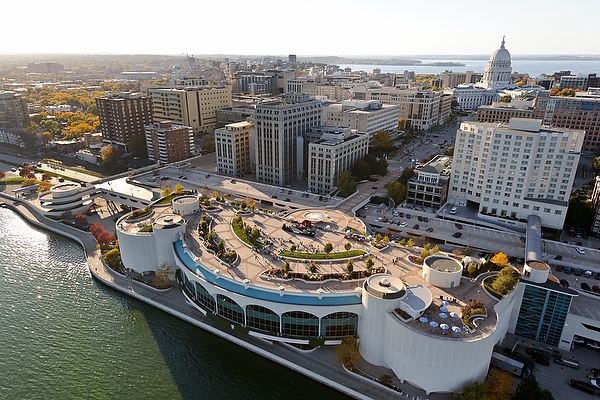
Monona Terrace is located juts two blocks from the State Capitol. Inside the building, it has 85,000-square feet of total meeting and exhibit space. The Exhibition Hall expands over 37,200-square-feet, accommodating 212 10’*10′ booths; seats 3,300 for concerts and 2,000 for banquets.
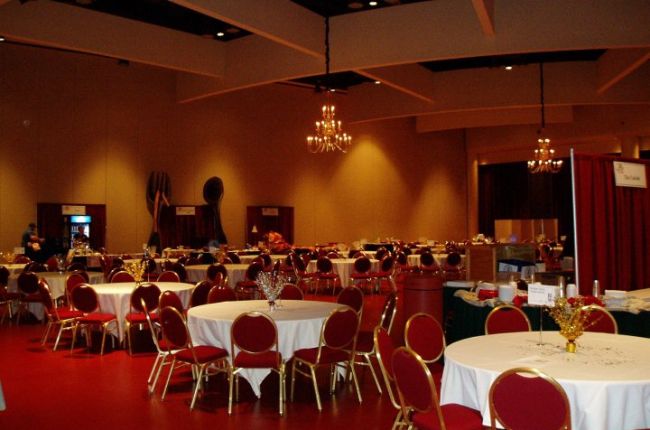
It also has a 13,524-square-foot Ballroom, seating 14,00 theater-style and 808 for banquet rounds of 8, a 5,5540-square-foot Lecture Hall, seating 320, 21 break0out rooms.
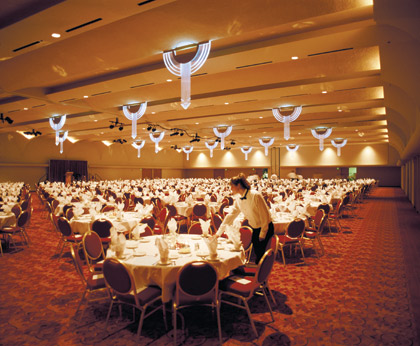
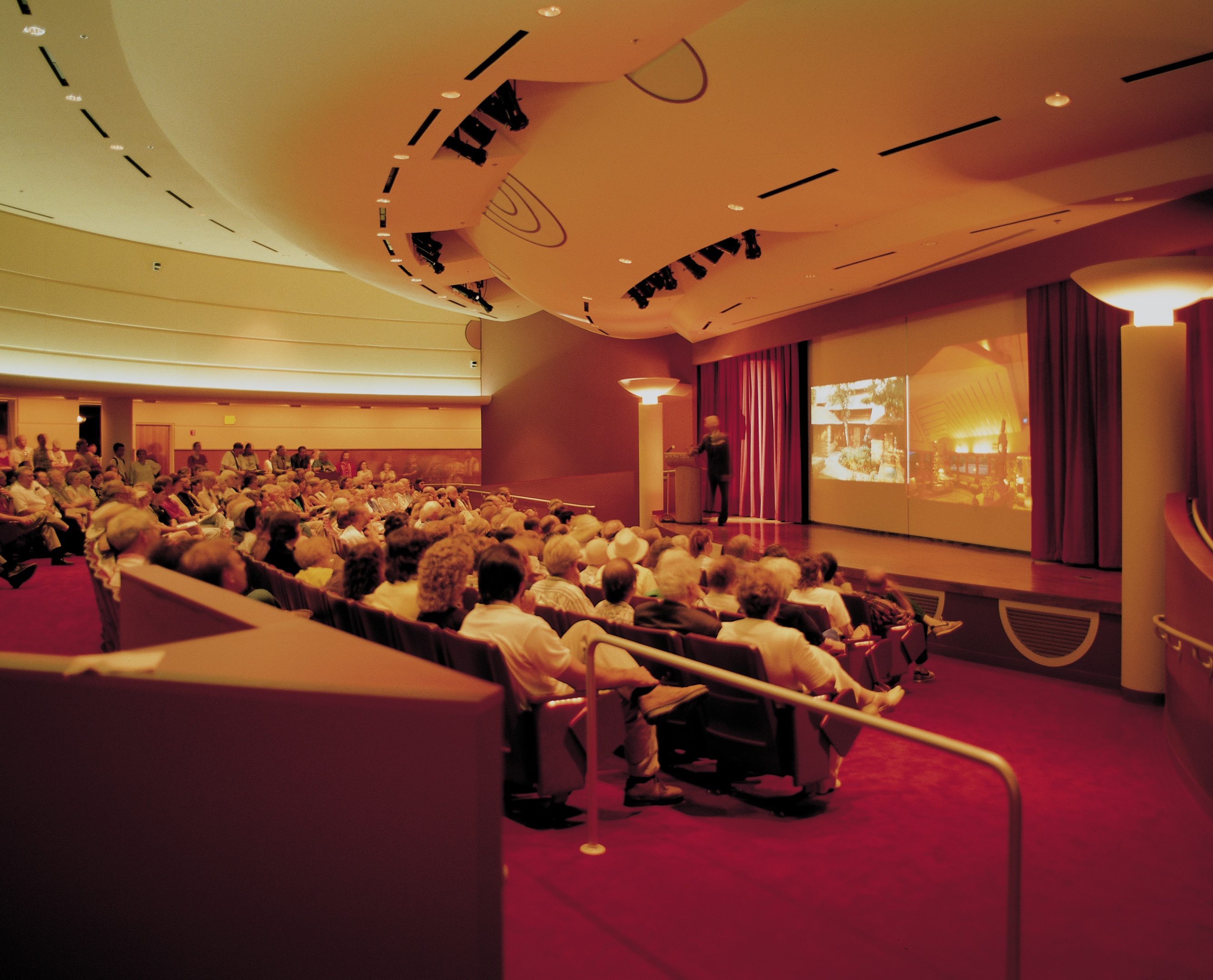
The 45,590-sqaure-foot William T. Evjue Rooftop Gardens can accomendate 3,043 for a reception. The designer has a playful idea of putting three domes symbolizing the sun, moon and earth at the rooftop. And there are public art sculptures and fountains to decorate the public gathering space.
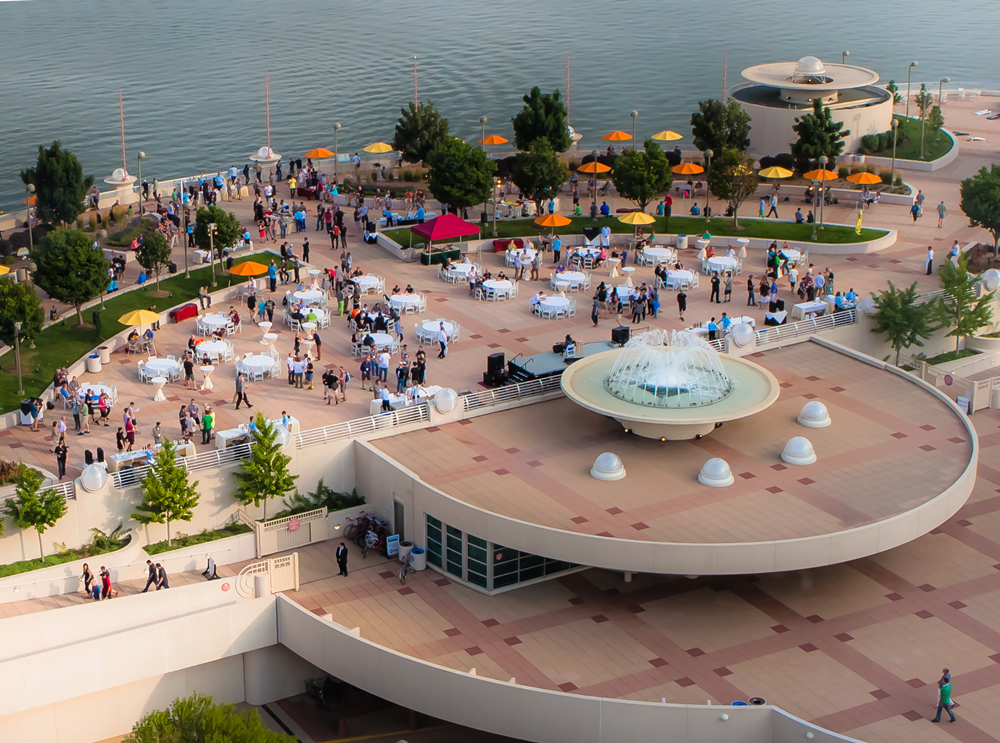




Monona Terrace maximizes its aesthetic value and functionality at the same time. It has virtually invisible space that benefits the public, visitors, and Dane County government including the courtrooms and jails, a civic auditorium, a railroad station, boat docks and storage, and also over 600 parking spaces.
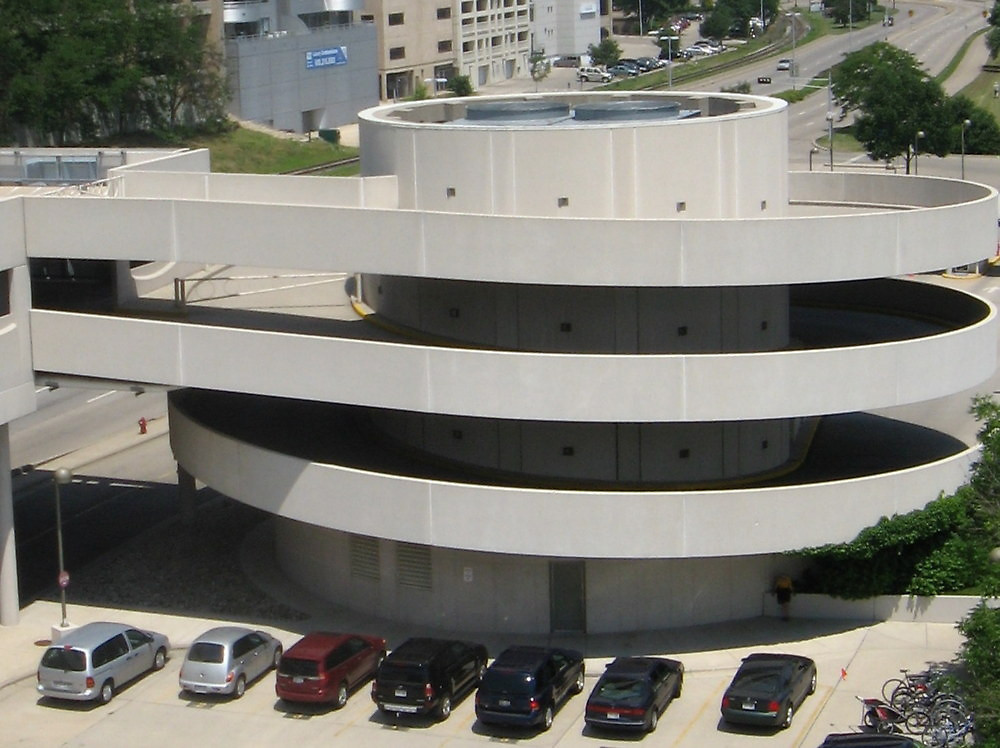
Besides these main features, it has other special amenities including a business center, a gift shop, art/exhibit area and expansive areas for registration and information needs. And it equipped with the most up-to-date technology to meet the needs from visitors and exhibitors including an on-site phone system, an internal RF system, programmable lighting, , ceiling-mounted speakers, translation equipment, and a variety staging and platforms for performance.
Today, nearly 390,000 people say “see you at Monona Terrace” each year. And it became a remakable landmark in the city of Madison.
Interpretation:
Monona Terrace and Madison- An Interview with Anthony Puttnam
Monona Terrace has a long and sordid history with Madison that started in 1938. There were many supporters and opponents when Frank Lloyd Wright first designed the building, and the same is true for today. Regardless of what side you are on, Monona Terrace is an important building to Madison because it is a meeting place for the city and its visitors, it reinforces the impact Wright has on architecture in Madison, and it provides a look at a building that is continually evolving to meet the needs of the city and the environment.
Anthony Puttnam, who was ultimately responsible for building Monona Terrace, became a student of Wright’s in 1954 (and is still actively working at Taliesin). He made a point that all the architects at Taliesin were working on Monona Terrace when he arrived until it was built in 1997. In 1992, Marshall Erdman asked Puttnam to prepare a detailed perspective drawing of the terrace for an upcoming city meeting. Puttnam remembers being asked the night before for the meeting and that “he did it from memory.” Puttnam claims, “that might have been helpful” in receiving the job. In Puttnam’s years of involvement with Monona Terrace, he became quite attached to the building and says of himself and the other Taliesin architects that they, “saw it as a way of discharging a debt.” Puttnam continues to be involved in the building and addresses the needs for continuing public involvement, consideration of the needs of the building and city, and the history of Frank Lloyd Wright.
Monona Terrace, although popular today, has been riddled with controversy from the start.
In the 1950-s the State Assembly made an action that spoke out against the building of Monona Terrace [1]. During its planning, opponents of the Terrace speak for the concerns of the environmental impact and city services that could be affected. Local attorney and activist, Ann Fleischli argued it, “perpetuates the contamination of Lake Monona” [2]. Fleischli ultimately filed four lawsuits against the building of Monona Terrace. Madison city planning incorporates public participation and opinion in the planning process, but this drew out the building for a long time because of all of the controversy. Puttnam believes this participation added to the building’s popularity by trying to incorporate the public’s opinion in the building design. To address the concerns of the public, Monona Terrace was the first LEED certified convention center; it just received a gold rating and is working towards platinum but this “will be a lot of work” according to Puttnam. In addition, the terrace has a successful community program offering free yoga and T’ai Chi class and free rooftop concerts.
One of the main goals of Monona Terrace’s builders, from the time of Wright’s involvement and continuing through Puttnam’s, and board of directors is to address the always changing needs of the city. We can see changes in earlier plans by Wright. Wright incorporated a three tier parking structure which was eventually taken out of the plans, which was a “mercy” according to Puttnam thinking about the brutal winters. Wright’s original plan was to have city and county offices and courtrooms along with a jail, auditorium, and boat house. Many of the original elements still remain but have been modified to meet the wants of the public. The building is adaptable and flexible for a variety of uses. Puttnam is pleased when Executive Director Gregg McManners says, “that every year we find something new to do with the building that we didn’t figure out before.”
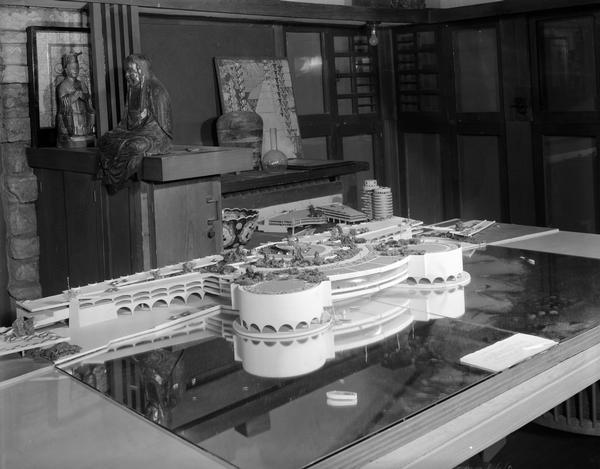
Although the final design is Puttnam’s (and not Wright’s), it is important as an example of Frank Lloyd Wright’s legacy in Madison can be seen in the many buildings that share Wright’s design principles and style. In Anna Andrzejewski article, “Frank Lloyd Wright, “Wrightification,” and Regional Modernism in Wisconsin’s Capital City,” she distinguishes between the degrees of what she calls “Wrightification” [3]. Monona Terrace and Puttnam fit in the group she calls, the “insiders”, of “Wrightification”- or the emulating of Wright’s ideas in the built environment. However, Puttnam speaks of the building as a Frank Lloyd Wright building stating that, “the building would have been inconceivable without him.” It is interesting because Puttnam made design changes but credits them to the board of directors and as a “extremely logical outcome” that Wright himself would have made work in the plan. Puttnam uses the example of the downstairs 37,200 square foot multi-purpose exhibition hall that he designed for the building stating that, “Mr. Wright would have figured out how to do it too.”
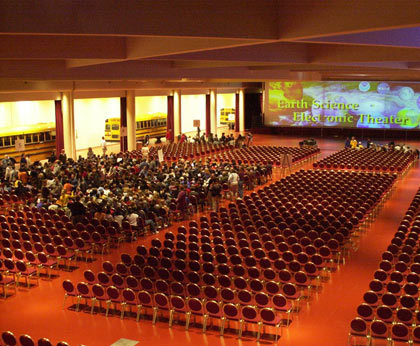
Frank Lloyd Wright’s influence on the City of Madison is undeniable which adds to the popularity of Monona Terrace. In addition, Wright has been an inspiration for architects, like Puttnam, who trained with him, and to other architects around the world. Puttnam and others worked tirelessly on the building of Monona Terrace. The buildings public involvement, evolving uses, and ties to Wright continues to “reinforce the fabric of the city” something Puttnam believes Wright was trying to accomplish.
Bibliography:
Recorded verbal interview with Anthony Puttnam given by Jeremy Nuttall. MP3. 2016.
– (Author Unknown),“None of the States Business” Racine Journal Times (1957): 1.
– Marv Balousek, “Monona Terrace: 10 years” Wisconsin State Journal (2007): A7.
-Andrzejewski, Anna. “Frank Lloyd Wright, “Wrightification,” and Regional Modernism in Wisconsin’s Capital City.” (2012)
–Wright, Frank Lloyd, 1867-1959. Frank Lloyd Wright and Madison : Eight Decades of Artistic and Social Interaction. Madison, Wis. :Elvehjem Museum of Art, University of Wisconsin-Madison, 1990.
– Facilities/Room Capacities. Retrieved from http://www.mononaterrace.com/meetings/facilities-room-capacities
–Monona Terrace. Retrieved from http://www.visitmadison.com/planners/facilities/monona-terrace/
–Event Planning Guide: Monona Terrace Community And Convention Center. Retrieved from http://cuke.hort.ncsu.edu/gpb/meetings/PBCC09TerraceBrchr.pdf

